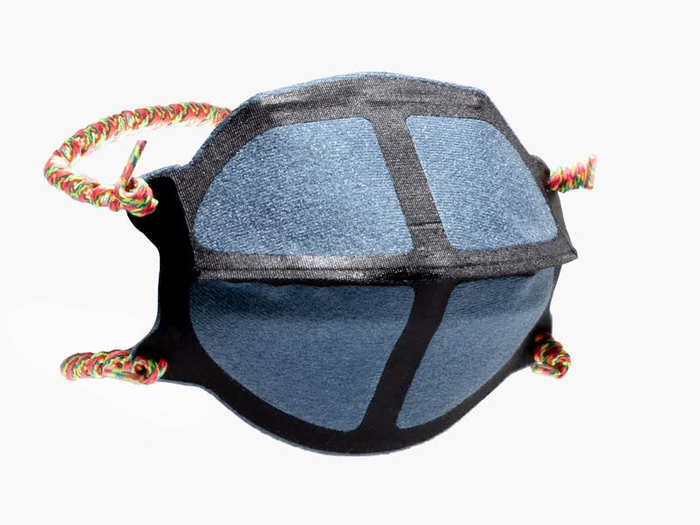
In figuring out the materials for the mask, Wheeler said the team was focused on two elements: fit and filtration capabilities of the fabric.
After consulting with healthcare professionals and hospitals, the team landed on a combination of four fabrics to best serve its wearers' filtration needs.
New Balance's current standard face mask has five layers of polyurethane foam, non-woven melt blown fabric, and nylon and polyester layers that are bonded through a heat melt process.

"We didn't want to use just basic fabric that looked like a mask," Wheeler said of the mask's design.
Since the masks were created from whatever New Balance material was available and approved, the prototype and subsequent products ended up reminiscent of the brand's footwear.

Materials were utilized from the company's domestic supply, so the sourcing process happened rather quickly.
In terms of mask production in the factory, there are a few major steps in the process.
"There wasn't much in the way of reconfiguring the lines," Wheeler said of the mask production supply chain, which echoes the steps for creating sneakers.
Once in the factory, the first step of mask creation begins by putting out rolls of fabric onto an automated "NC cutter," which uses a computerized pattern to cut pieces into the fabric.
NC cutting is also used in New Balance's current shoe-making process.
Once, the pieces are cut, they are then assembled into the mask.

After the basic mask is assembled, a material called "no-sew" is laid on top.
This is the black, shiny looking material that divides the front of the mask into four segments and outlines the perimeter of the product. It's called no-sew because it is bonded to the material with a heat-sealed bond as a opposed to a needle, which creates perforations in the fabric.
After the no-sew material is placed, the masks go through a heat press in a similar process used in sneaker production.
The no-sew material, which is commonly used in New Balance shoes, has been an attractive feature to observers of the new masks.
"Even though we were really focused on performance, a lot of the feedback we had was 'That's really an awesome New Balance look, it's very unique,'" Wheeler said.

The last step in the process involves the application of the strapping mechanism of the masks, which is actually made from New Balance's elastic laces from its sneakers.
"As we kind of innovated around the strapping and what could hold the mask best to the face, we came up with this idea with the elastic laces," Wheeler said. Most of the laces used in the initial batches of the masks were excess laces that Wheeler said would have likely ended up in a landfill if not used for the masks, which he said was also a sustainability win.
In terms of functionality, Wheeler said that the elastic laces help enable people to adjust them to conform to their faces for a better fit.

"It's a relatively quick process, fortunately," Wheeler said, explaining how the goal was to create a fair amount of product in a short period of time.
The Lawrence, Massachussetts and Norridgewock, Maine factories will be focusing on mask production to help the company get to the goal of producing 100,000 masks weekly.
Some 120 associates will be working between the two facilities and Wheeler said his team is encouraging social distancing by spreading out each station and worker. All factory workers are also equipped with their own PPE as well.

"There's been such pride within the company to be able to put our factories to use to help out in this need during the crisis," Wheeler said.
Though generally devoted to the production of high-quality footwear and athletic wear, Wheeler is proud of the New Balance team's efforts to utilize the same craftsmanship and innovation for PPE products in a time of need.
"We're certainly a purpose-driven organization," Wheeler said. "And we always say that we believe that when there's a purpose, there's a way."
 Should you be worried about the potential side-effects of the Covishield vaccine?
Should you be worried about the potential side-effects of the Covishield vaccine?
 India T20 World Cup squad: KulCha back on menu, KL Rahul dropped
India T20 World Cup squad: KulCha back on menu, KL Rahul dropped
 Sales of homes priced over ₹4 crore rise 10% in Jan-Mar in top 7 cities: CBRE
Sales of homes priced over ₹4 crore rise 10% in Jan-Mar in top 7 cities: CBRE

Copyright © 2024. Times Internet Limited. All rights reserved.For reprint rights. Times Syndication Service.